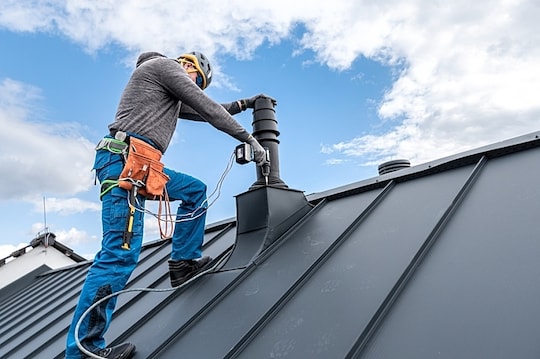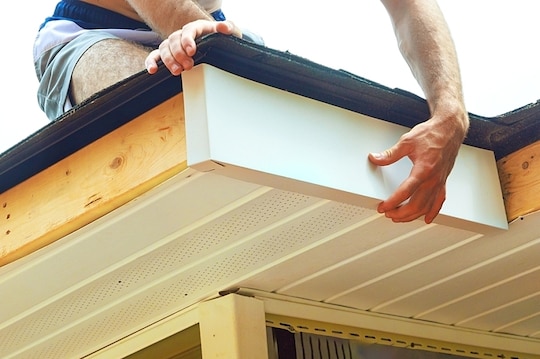
While roof shingles come in many shapes and colors, the material is the defining factor separating different options. Whether you're replacing your roof or considering what to install on your new house, comparing shingle materials can help you choose the best option for your home. So, what are shingles made of, exactly? Here's what you need to know.
Asphalte
Asphalt shingles are the most common roofing shingles. In fact, more than 80 % of US homes have asphalt shingles. They're popular because they're cost-effective and come in many different colors and styles.
Asphalt shingles are made of a fire-resistant fiberglass base. An asphalt coating gets added over the fiberglass base for water resistance. It's then topped off with mineral granules (a blend of crushed granite, limestone, and ceramic materials) that add ultraviolet resistance, additional fire resistance, and color depth through pigments.
As one of the leading brands in roofing, GAF has many options when it comes to asphalt shingles, including Timberline HDZ®, Timberline UHDZ®, and Timberline® NS, to name a few. They come in a variety of colors—charcoal, barkwood, pewter gray, and more—so you can easily match your home's color scheme. Plus, their high-quality construction can help ensure your roof will stand the test of time, with warranties to back it up.
GAF's patented RoofCycle™ process recycles asphalt shingles, reducing landfill waste and the need for virgin asphalt in manufacturing. This innovation maintains high product quality while promoting environmental sustainability.
Métal
You might choose metal shingles over asphalt shingles due to their sleek design and longevity. They're made of steel, aluminum, zinc, or copper, and each metal has its own advantages and disadvantages.
Steel shingles are durable, making them a great option if you live in an area with heavy snow or hail. They're also cost-effective. Aluminum shingles are lightweight and long-lasting, but can be more expensive than other metals.
The GAF TimberSteel™ system is a new metal roofing system that combines beauty, strength, and affordability. While metal shingles can sometimes cost more than asphalt, the GAF TimberSteel™ system maintains the durability of metal at a price that's not as tough on your budget.
Bois
Wood shingles offer a timeless look that makes them popular with homeowners who have older more traditional homes. They're made from various tree species, including pine, redwood, cedar, and spruce.
You can paint wood shingles to match your home's color scheme, giving you a full spectrum of color options. Wood shingles are also typically treated with special coatings that protect against the natural elements. However, they can be susceptible to water damage over time.
Ardoise
Slate shingles are produced from metamorphic rock and cut into shapes during processing. Slate's mineral composition produces different colors, and different compositions can create a unique and colorful roof.
Slate roofs last a long time and require little maintenance. The disadvantage of slate is it can be more expensive than other materials, and it's heavy, meaning your home must be capable of carrying the extra weight.
Clay
Clay shingles are made from natural clay that's processed and shaped into shingles or tiles. The clay is dried and hardened through a firing process. It's then glazed with coatings that add color and water resistance. Clay shingles can be expensive, however, and they're brittle, breaking easily under impact.
Choosing the Right Option for You
Understanding shingle materials can help you narrow down your options. You'll also want to consider your home's architecture and your local weather patterns. Take a look at houses in your neighborhood: what are shingles made of in your area? Certain materials may be better choices depending on where you live. Talking with a GAF-certified contractor* can help guide you toward the best material for your roof.
*Les entrepreneurs inscrits aux programmes de certification GAF ne sont pas des employés ou des agents de GAF, qui ne contrôle pas et ne supervise pas ces entreprises indépendantes. Les entrepreneurs peuvent recevoir des avantages, tels que des points de fidélité et des remises sur les outils de marketing de GAF pour avoir participé au programme et offert des garanties améliorées GAF, qui exigent l'utilisation d'une quantité minimale de produits de la marque. Your dealings with a Contractor, and any services they provide to you, are subject to the GAF Contractor Terms of Use.



